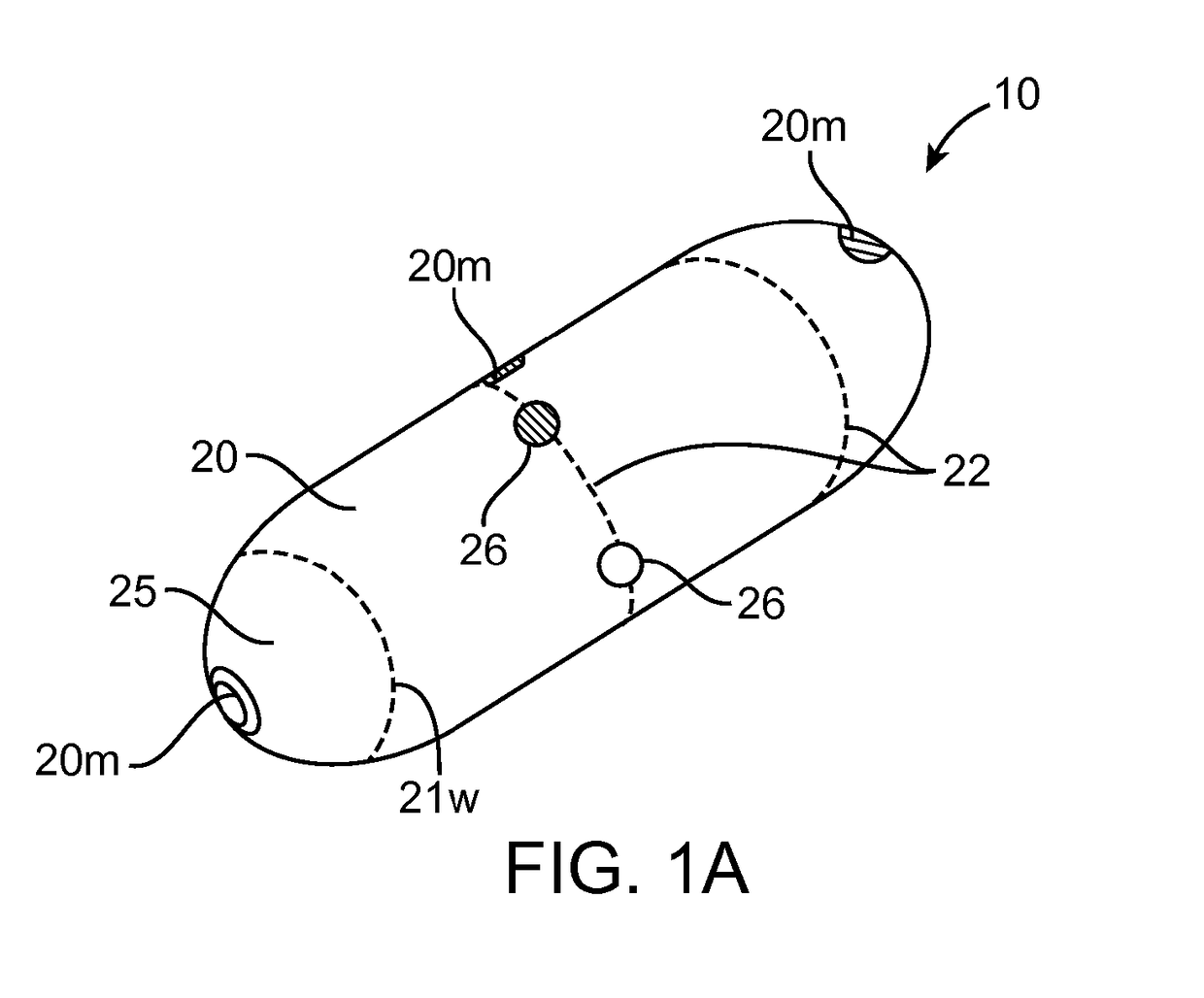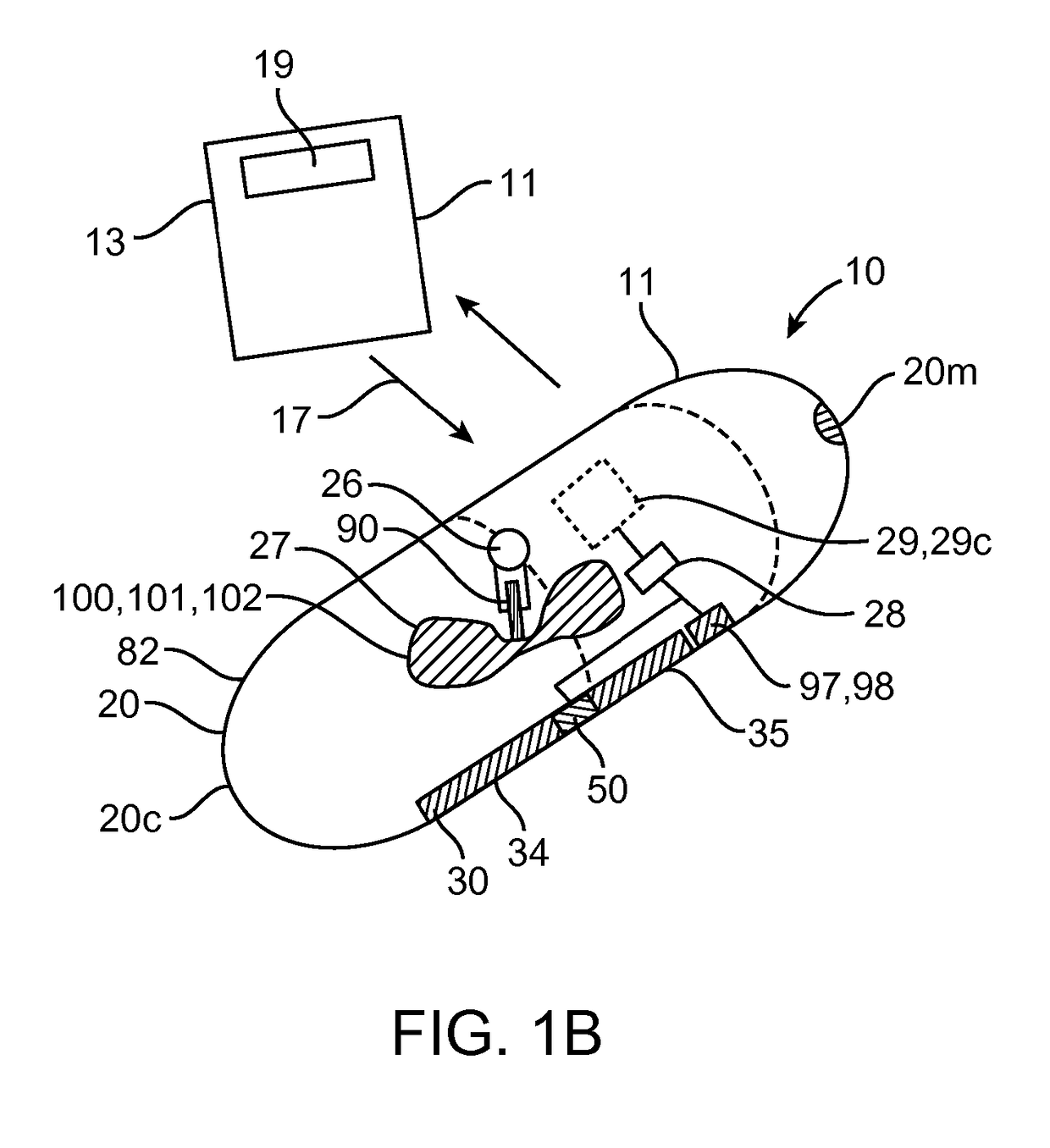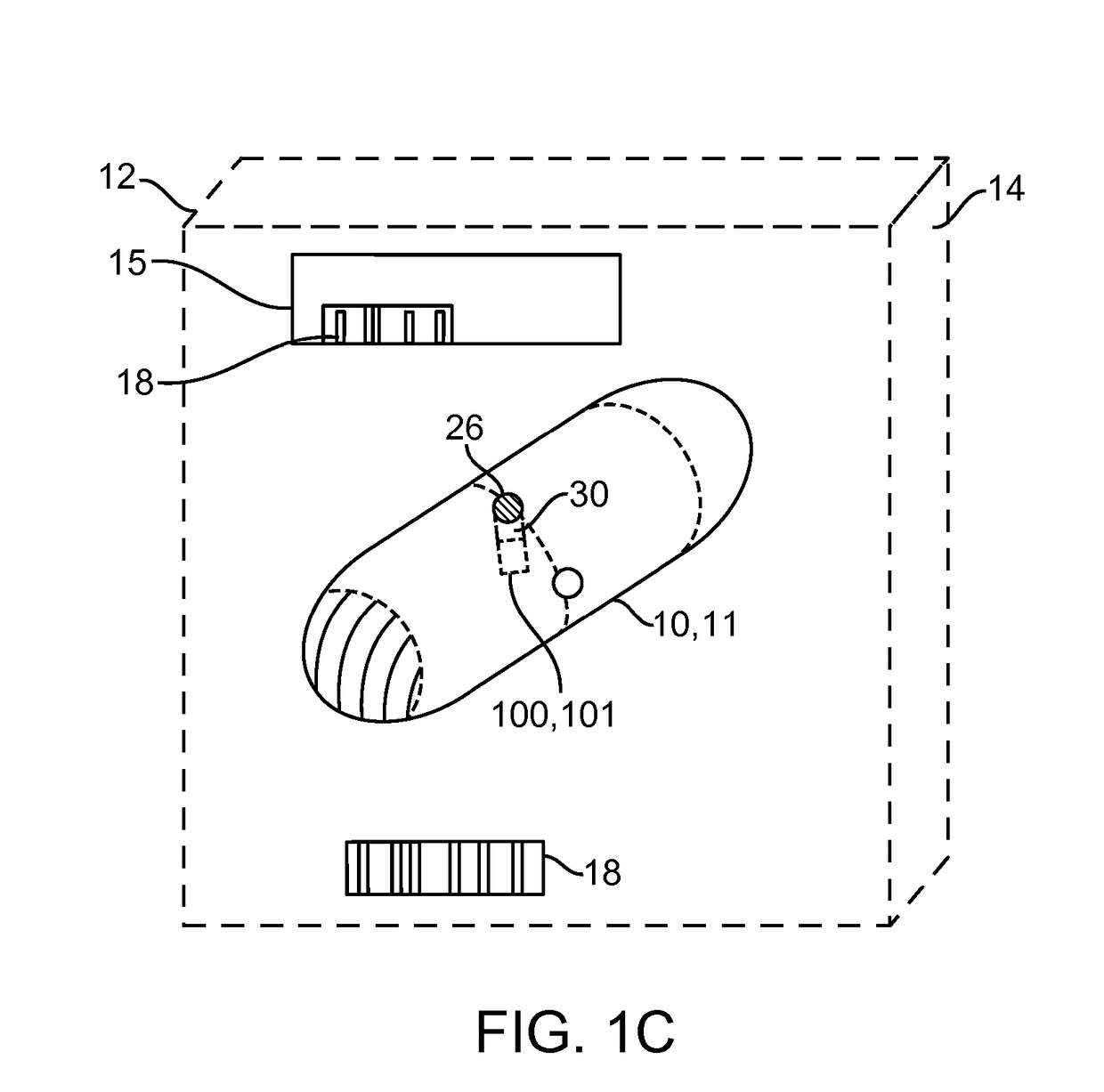Methods and articles for delivering viable cells into solid tissue
a technology of solid tissue and viable cells, which is applied in the direction of catheters, applications, metabolic disorders, etc., can solve the problems of slow or erratic absorption of viable cells, breakdown/degradation of viable cells, and limited application of proteins, antibodies and peptides, etc., to promote viability and enhance penetration into tissue
- Summary
- Abstract
- Description
- Claims
- Application Information
AI Technical Summary
Benefits of technology
Problems solved by technology
Method used
Image
Examples
Embodiment Construction
[0049]Embodiments of the invention provide devices, preparations, systems and methods for delivering viable cells in to various locations in the body, in particular to the intestinal wall tissue. In many embodiments the cells will be delivered by a swallowable device configured to maintain viability of the cells while they pass through the gastrointestinal tract and to a selected site within intestinal tract or other location. As used herein, “GI tract” refers to the esophagus, stomach, small intestine, large intestine and anus, while “Intestinal tract” refers to the small and large intestine. Various embodiments of the invention can be configured and arranged for delivery of viable cells into the intestinal tract as well as the entire GI tract. Also in many embodiments the delivered cells will comprise therapeutic cells and will sometimes be referred to as such. However embodiments of the invention are not limited to therapeutic cells only. In particular it should be understood tha...
PUM
 Login to View More
Login to View More Abstract
Description
Claims
Application Information
 Login to View More
Login to View More - R&D
- Intellectual Property
- Life Sciences
- Materials
- Tech Scout
- Unparalleled Data Quality
- Higher Quality Content
- 60% Fewer Hallucinations
Browse by: Latest US Patents, China's latest patents, Technical Efficacy Thesaurus, Application Domain, Technology Topic, Popular Technical Reports.
© 2025 PatSnap. All rights reserved.Legal|Privacy policy|Modern Slavery Act Transparency Statement|Sitemap|About US| Contact US: help@patsnap.com



